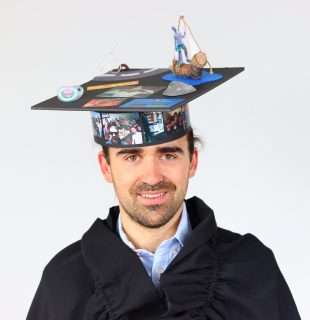Matthias Utzschneider
Acquisition- and Reconstruction-Techniques for Sodium Quantification in the Skeletal Muscle using Sodium Magnetic Resonance Imaging (23Na MRI)
Measurement of the tissue sodium concentration (TSC) in human tissue offers important insights into pathological- and biological processes with applications in nephrology, neurology and myology. The TSC can be determined non-invasively by sodium magnetic resonance imaging (23Na MRI). The aim of this work is to accelerate 23Na MRI for TSC measurements in the skeletal muscle. Reconstruction methods and adapted acquisition techniques were investigated to reduce the acquisition time for 23Na MRI. The time saved could improve the applicability of TSC measurements for the use in the clinical environment and clinical studies. The main focus of this thesis is on compressed sensing (CS) reconstruction techniques and anisotropic acquisition techniques with reduced undersampling artifacts. Here, the acquisition time reduction is achieved by undersampling, which means measuring less data points than needed for an image with a certain resolution. This undersampling causes artifacts and decreases image quality. The acquisition sequences and reconstruction techniques used and developed in this thesis seek to remedy these deficiencies. First, 3D dictionary-learning compressed sensing (3D-DLCS) was evaluated for reconstruction of undersampled 23Na MRI data acquired with a density-adapted 3D-radial sampling sequence with a cuboid field-of-view (DA-3DPR-C). The results of the study with simulations and in vivo measurements indicated that 3D-DLCS could be applicable for a four-fold acceleration of TSC measurements in the skeletal muscle. However, the quantification error decrease was only about 10% compared to the reference. Based on these results, optimized acquisition techniques were investigated and developed for accelerated 23Na MRI. Two acquisition sequences were used as a basis: the DA-3DPR-C method and a 3D acquisition-weighted density-adapted stack-of-stars sequence (AWSOSt). Two further acquisition sequences were developed to increase the artifact incoherence: A golden ratio rotated stack-of-stars sequence based on AWSOSt and a DA-3DPR-C adaption with golden means reordered projections. Comparisons in simulations and an in vivo/vitro study showed that the quantification error is decreased and the artifact incoherence is increased by adapting acquisition trajectories using the golden angle and golden means. Additionally, three CS algorithms were compared for the adapted stack-of-stars acquisition sequence in simulations and an in vivo/vitro study: 3D-DLCS, total variation CS (TV-CS) and TV-CS with a block matching prior. In this comparison, the highest quantification error decrease of 35% was observed with 3D-DLCS for an acceleration factor of 4.1 and a measurement time of less than two minutes. The results demonstrate the impact of artifact incoherence for CS reconstruction. Furthermore, the investigations showed that applicable acquisition times are achievable by artifact-reduced acquisition and CS reconstruction. Beyond CS, deep learning (DL) based reconstruction was explored in a preliminary study. A U-Net was trained using 350 23Na MRI calf measurements. The quantification error was decreased by 64% with the U-Net compared to the reference method. These promising results indicate that DL-based reconstruction could probably be the next step for accelerated 23Na MRI.
